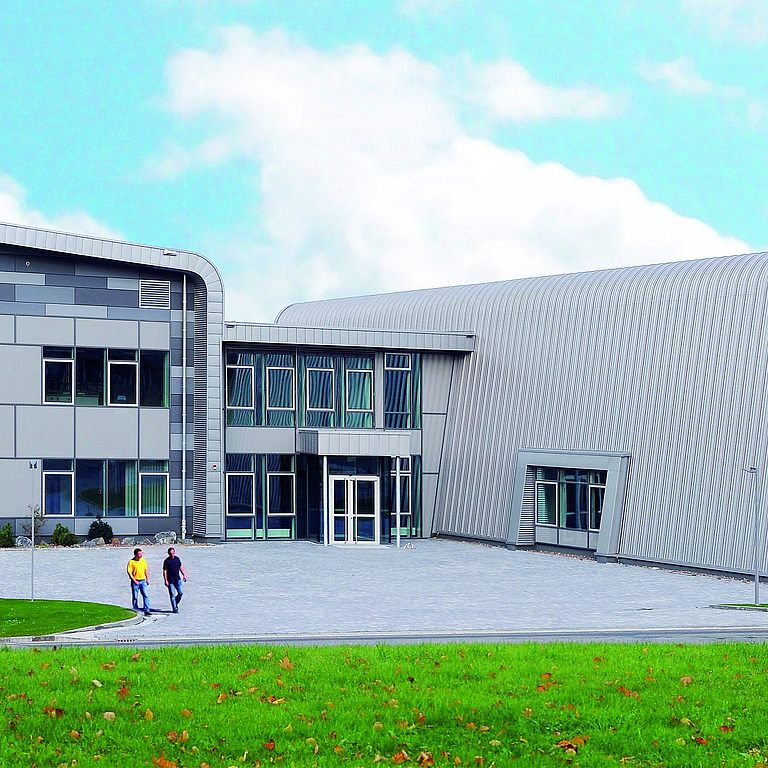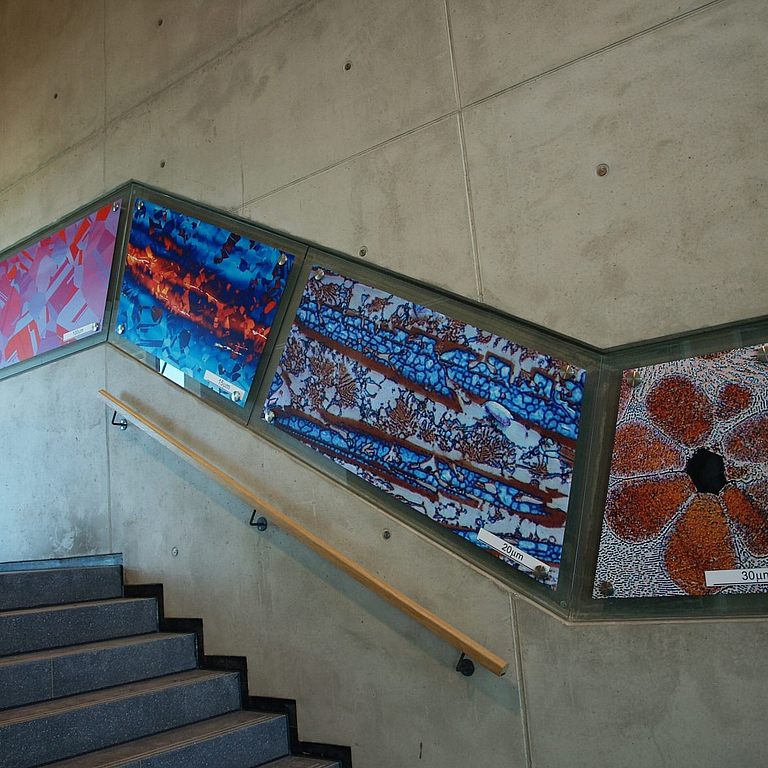Preparation
Dielectric Impeded Discharge - DBE
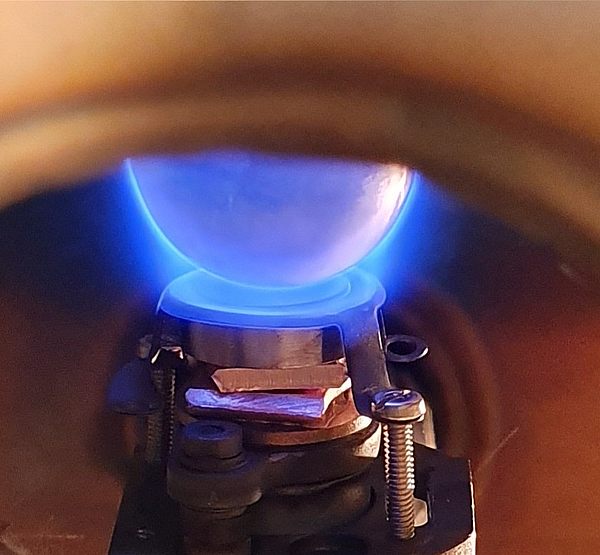
Dielectricimpeded discharges (DBE) are low-temperature plasmas that can be used for surface functionalization, coating and material removal. DBE plasmas are characterized by a low gas temperature which is usually only a few degrees above room temperature. Since DBE plasmas can be ignited under atmospheric pressure, they are used in many areas. For example, dielectrically impeded discharges can be used to functionalize plastic surfaces for better adhesion to metal materials, to treat skin diseases and wounds, to deposit semiconducting and insulating thin films, and to remove impurities from surfaces and gases.
Focused Ion Beam - FIB
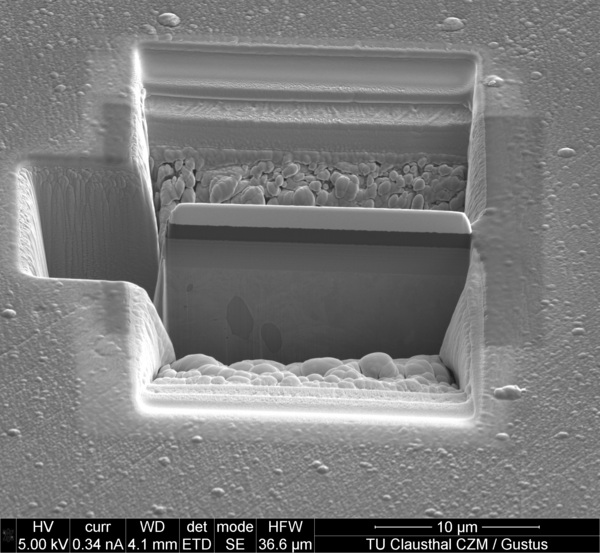
The FIB technique can be used to make defined inc isions in sample surfaces. The preparation technique is mainly used in scanning electron microscopes. The incisions are created by means of gallium ions, which are focused via ion optics and accelerated onto the surface. Similar to SEM, the galium ion beam is moved across the surface in a raster pattern. Through energy and momentum transfer, material is removed from the surface. The FIB technique is mainly used for depth profile analysis. For this purpose, a step-shaped incision is usually made in the surface and the cut edge is examined by SEM/EDX. In this way, for example, the elemental composition can be analyzed as a function of depth. Furthermore, thin lamellae (100-300 nm) can be prepared from the surface by means of FIB, which can be used for STEM and TEM investigations.
Physical Vapor Deposition - PVD
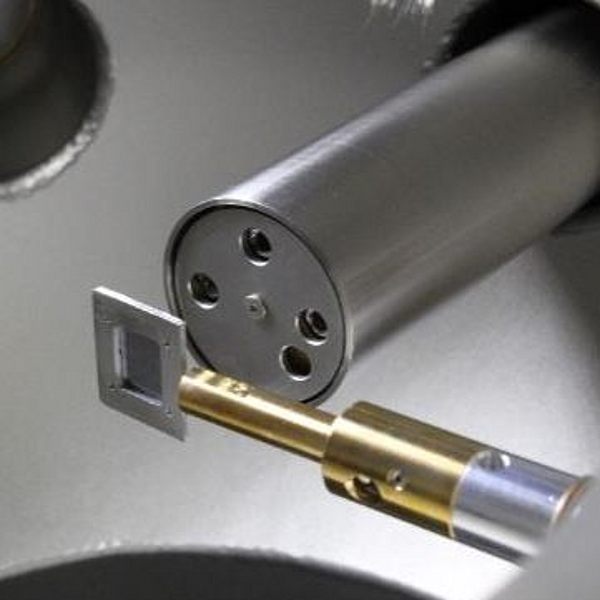
Physical vapor deposition (PVD) is a coating process that can be used to deposit thin layers (a few nm to several µm) of a material on any material surface. The preparation of the layers is usually carried out under vacuum conditions, whereby the material is first converted into the gas phase, for example by heating or ion bombardment, and then deposited on the substrate surface by condensation. By means of PVD, almost all materials from metals to organic molecules can be deposited. In surface physics, the PVD technique is used, among other things, to study the physicochemical interaction between atoms or molecules and material surfaces.
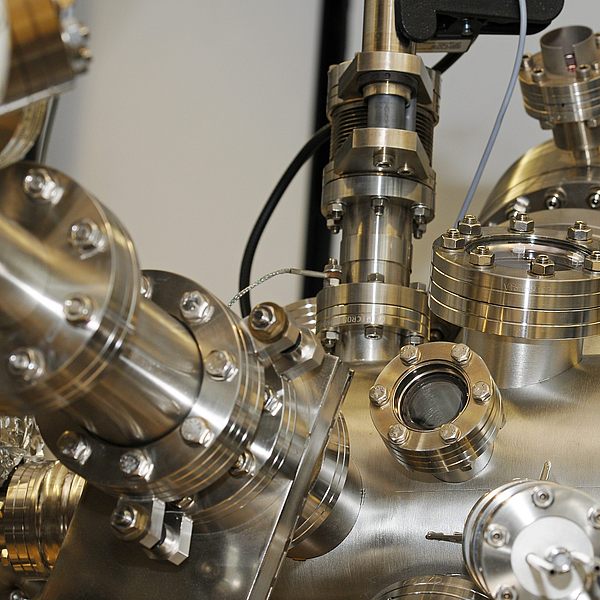
UHV preparation
For the investigation of physico-chemical interactions and reactions on surfaces, further preparative techniques are available in the various vacuum apparatuses.
Annealing: By means of electron impact heating, samples can be heated up to approx. 1500°C in vacuum.
Ar-ion sputtering: A material removal technique that can be used to remove surface contamination from samples as well as to perform depth profile analyses.
Gas supply: Defined gases can be admitted into the vacuum chamber via gas injection systems. This enables, for example, the investigation of the interaction of certain gases with material surfaces.
